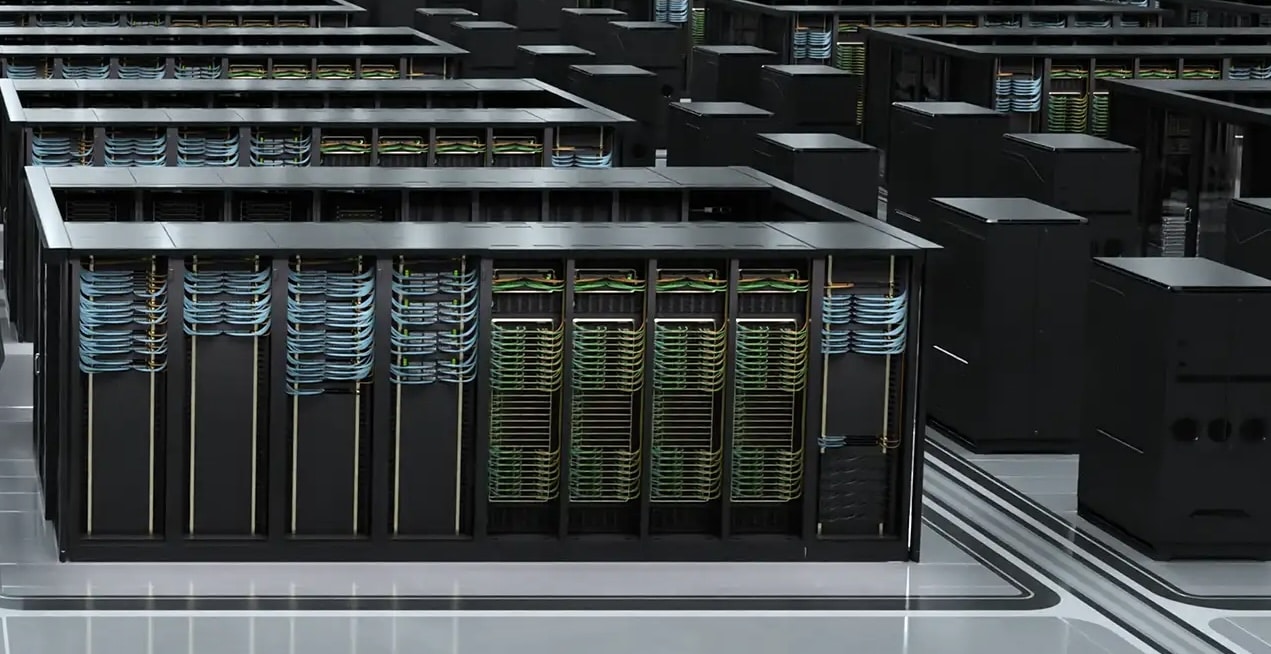Vertiv Aligns with NVIDIA’s 800 VDC Power Architecture for Next-Gen Energy Infrastructure
Vertiv, a global provider of critical digital infrastructure, has announced its strategic alignment with NVIDIA’s new 800 VDC energy architecture as part of its roadmap for data centers focused on artificial intelligence (AI). This move positions Vertiv as a key player in the transition towards more energy-efficient solutions, ready to power the next generation of “AI factories.”
The American company plans to launch its new 800 VDC product portfolio in the second half of 2026, ahead of the official rollout of NVIDIA Kyber and NVIDIA Rubin Ultra platforms, designed for advanced AI workload demands.
A Leap in Energy Efficiency for Loads Exceeding 300 kW per Rack
The rise of generative AI and the training of large-scale models have amplified power demands per rack, often exceeding 300 kilowatts (kW). The 800 VDC architecture enables more centralized and efficient electrical distribution, reducing copper usage, thermal losses, and current intensity. According to Vertiv, these factors will help simplify energy management in high-density data centers and reduce environmental impact.
The new portfolio will include:
- Centralized Rectifiers
- High-Efficiency DC Busways
- Rack-Level DC-DC Converters
- DC-Compatible Backup Systems
These solutions will be integrated into a modular infrastructure strategy called “compute unit,” designed for all elements—energy, cooling, IT—to function as a cohesive and scalable system in hyperscale environments.
Established Expertise in Direct Current
While the launch of this new portfolio marks a milestone, Vertiv is not starting from scratch. The company has over two decades of experience in deploying ±400 VDC architectures, particularly in telecommunications networks, microgrids, and critical industrial facilities.
“While the 800 VDC architecture is new, direct current is not for us,” explained Scott Armul, Executive Vice President of Global Portfolio at Vertiv. “We enter this transition from a position of strength, with decades of worldwide implementation and a solid portfolio of energy solutions.”
Over the years, Vertiv has expanded its technical capabilities through strategic acquisitions, allowing it to build a strong foundation for the design, deployment, and safe operation of high-voltage direct current systems.
Prepared for the Next Wave of GPUs
Vertiv’s announcement directly addresses the new standard proposed by NVIDIA for their future AI-driven data centers. With a focus on staying one generation of GPUs ahead, the company aims to provide energy and cooling infrastructure designed to meet the demanding thermal and electrical requirements of upcoming compute-intensive platforms.
This anticipation is important: in a context where data centers training or running AI models can consume gigawatts of aggregated power, any improvement in efficiency or modularity represents a key competitive advantage. Vertiv’s new solutions will allow operators to reduce installation costs, improve energy density, and optimize thermal performance.
Strategic Differentiation: AC and DC Support
Unlike other providers, Vertiv embraces a hybrid strategy that supports both alternating current (AC) and direct current (DC), enabling its customers to choose the most suitable architecture based on their workloads, efficiency goals, and regional standards.
“The future of AI factories demands equivalent innovation from energy and cooling suppliers. At Vertiv, we’re not just participating in this transition; we’re leading it,” Armul concluded.
AI, Efficiency, and Sustainability: The New Strategic Triangle
Beyond energy efficiency, Vertiv positions its new portfolio as an essential piece in the sustainability of data centers, a growing concern for regulators, investors, and consumers. Reducing the carbon footprint of infrastructure that supports artificial intelligence has become a priority goal for major tech companies.
Moreover, the modularity and scalability of the new systems will allow companies to adapt their deployments as demand for AI grows, avoiding oversizing and unnecessary costs.
Conclusion: Towards AI-Ready Energy Infrastructure
With this announcement, Vertiv reinforces its role as a key provider in the evolution of digital infrastructure in the era of artificial intelligence. The launch of its 800 VDC portfolio not only addresses present technical demands but anticipates the future needs of data centers that will bring the most advanced AI models to life.
At a time when energy efficiency, scalability, and sustainability define success in the critical infrastructure market, Vertiv positions itself at the forefront of change, offering real solutions for the challenges of tomorrow.
Source: vertiv

